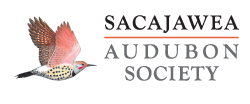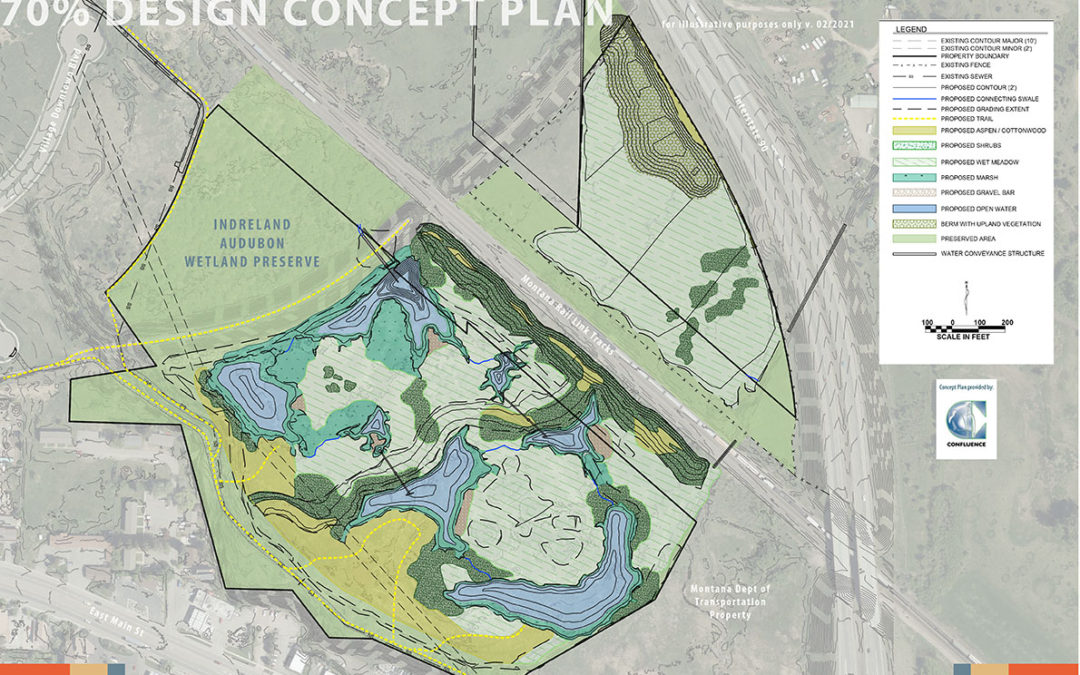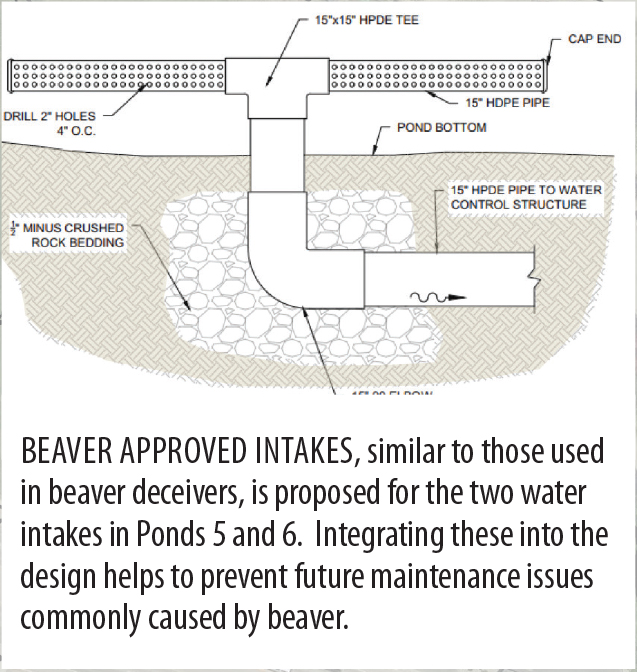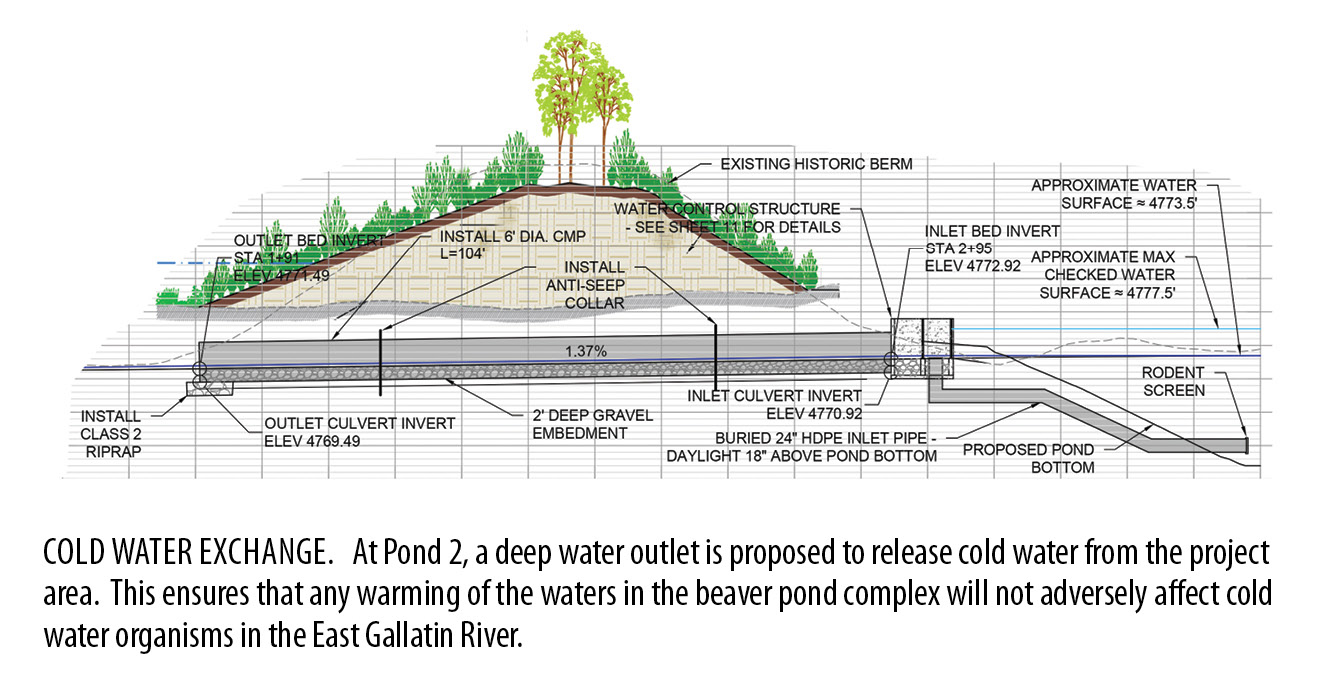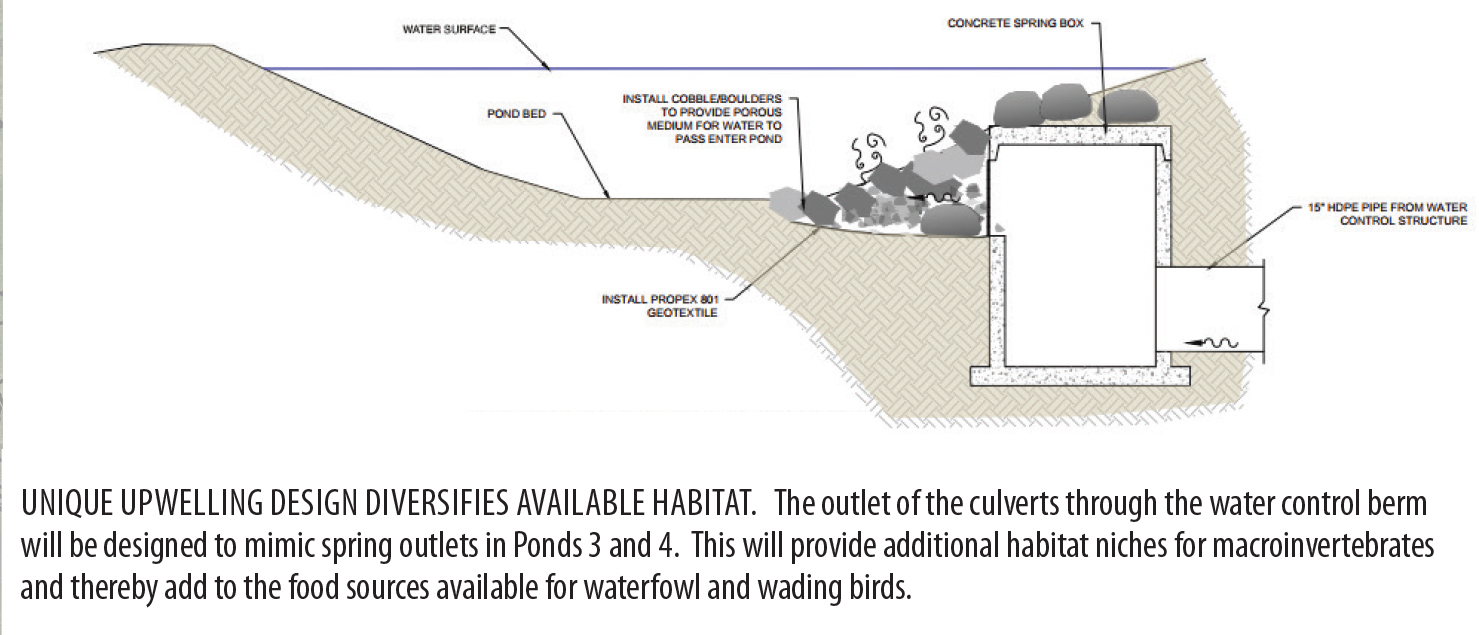Sacajawea Audubon Society (SAS) and Confluence Consulting, Inc. (Confluence) are excited to announce
that the Indreland Audubon Wetland Preserve (IAWP) 70% design has been completed and approved by the SAS board of directors. The purpose of this article is to provide a general description of the basis of design and some of the innovative design features that will make this project a success for wildlife and the community. When reviewing this article, please refer to the map (above) that illustrates the design features.
The IAWP was set aside by SAS to conserve and enhance a wetland community in an urban setting. The site will
function as an environmental study area offering education about wetland ecology that is accessible to all ages. SAS aims to document the effect of human influence on wetland communities and inspire the conservation, restoration, and enhancement of other wetlands. SAS strives to have an impact on wetland conservation that extends beyond the Gallatin watershed.
This 70% design will showcase the role of beaver as a keystone species in creating wetland habitat. The interspersion of open water areas, marshlands, wet meadows, willow, and alder dominated areas— as well as cottonwood and aspen forest habitat—create numerous niches to support a diverse array of flora and fauna that maximizes the productivity of the site at numerous trophic levels.
The design provides a significant improvement in wetland function, particularly with regard to general wildlife habitat diversity, water quality improvements, short and long term surface water storage, food chain support, and groundwater discharge. The design also provides for visitor access and infrastructure consistent with conserving the wetland resource while offering a place of respite in an urban area.
The Indreland Audubon Wetland Preserve is comprised of two parcels—the North Parcel and South Parcel—which occur north and south of the railroad tracks, respectively. Proposed wetland enhancement activities differ considerably between the two parcels.
North Parcel
The North Parcel contains a few small wetlands but is currently dominated by smooth brome (an upland grass
species) and is located between Interstate 90 on its north and east sides and the railroad on its south and west sides. An historic railroad berm occupies the northwestern boundary. Onsite investigations of groundwater depths in 2020 revealed that groundwater is relatively shallow. Analysis of the limited data set suggests that excavation of approximately two feet of soil will be sufficient for the establishment and development of approximately six acres of emergent wet meadow. This type of wetland will be seasonally wet in the spring and early summer, and then be expected to dry out over the course of the summer months. Persistent open water or complex habitats are not proposed for the North Parcel.
The conversion of the North Parcel to a more diverse, seasonally wet meadow provides several ecological
improvements for sensitive wildlife species, general wildlife habitat, short and long term surface water storage, production export/food chain support, and site uniqueness.
South Parcel
Proposed habitat improvements on the South Parcel are designed to increase habitat diversity and interspersion on the site, thereby increasing ecological niches and associated flora and faunal diversity. Perhaps the biggest change is the addition of 3.3 acres of open water habitat, ranging in depths from two to 16 feet across seven ponds. The design includes the bottom release of cool water from a 16-foot-deep pond that, because of its depth, causes the water column in the pond to stratify into temperature bands with the coldest water occurring at the bottom of the pond. During late August and September when water temperatures can be their most lethal for cold-water fish and aquatic organisms, this cool water discharging from the site will provide refuge from extreme water temperatures. Experience with this design in Montana has demonstrated a consistent reduction of 5-10° F between water temperatures flowing into a site and the water being discharged from a bottom release pond such as intended for the South Parcel.
Shrubby thickets and forested areas add structural complexity and habitats sought after by numerous neotropical migrant species. Their proximity to open water, wet meadow, and marshy habitats makes these habitats even more productive and appealing to a variety of species, leading to increased biodiversity and abundance of individual species found on the site. The addition of the forested area, particularly along the southwest portion of the South Parcel, adds a visual buffer for resident and migrant waterfowl from development along East Main Street and from planned visitor trails in that part of the Preserve.
Next Steps
The next steps in this project are to complete the 100% design, submit the design to regulatory agencies for review, and prepare permit applications for regulatory approval. Once we have the permits in hand, we will solicit bids for construction, and hopefully begin construction in the Fall of 2022 or Winter of 2023. Future newsletter articles are planned to keep SAS members up to date on the project and will be posted here.
